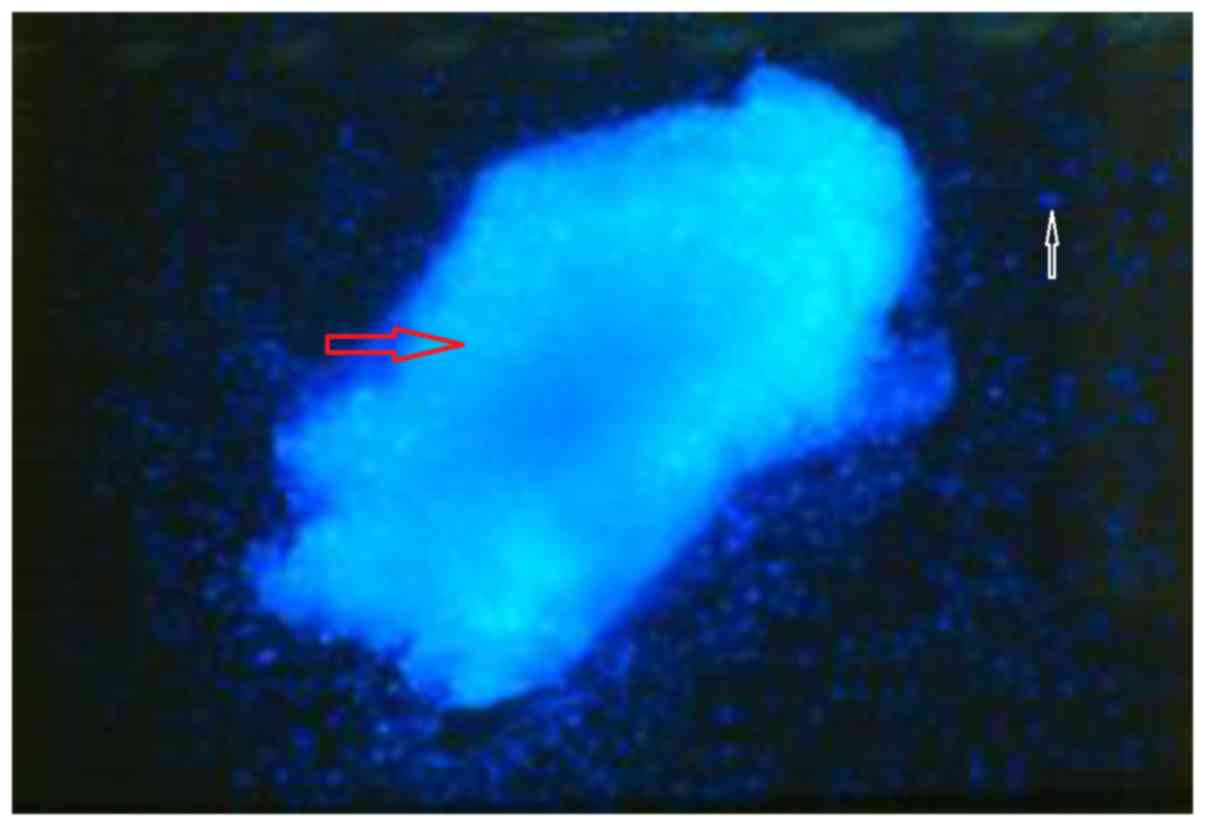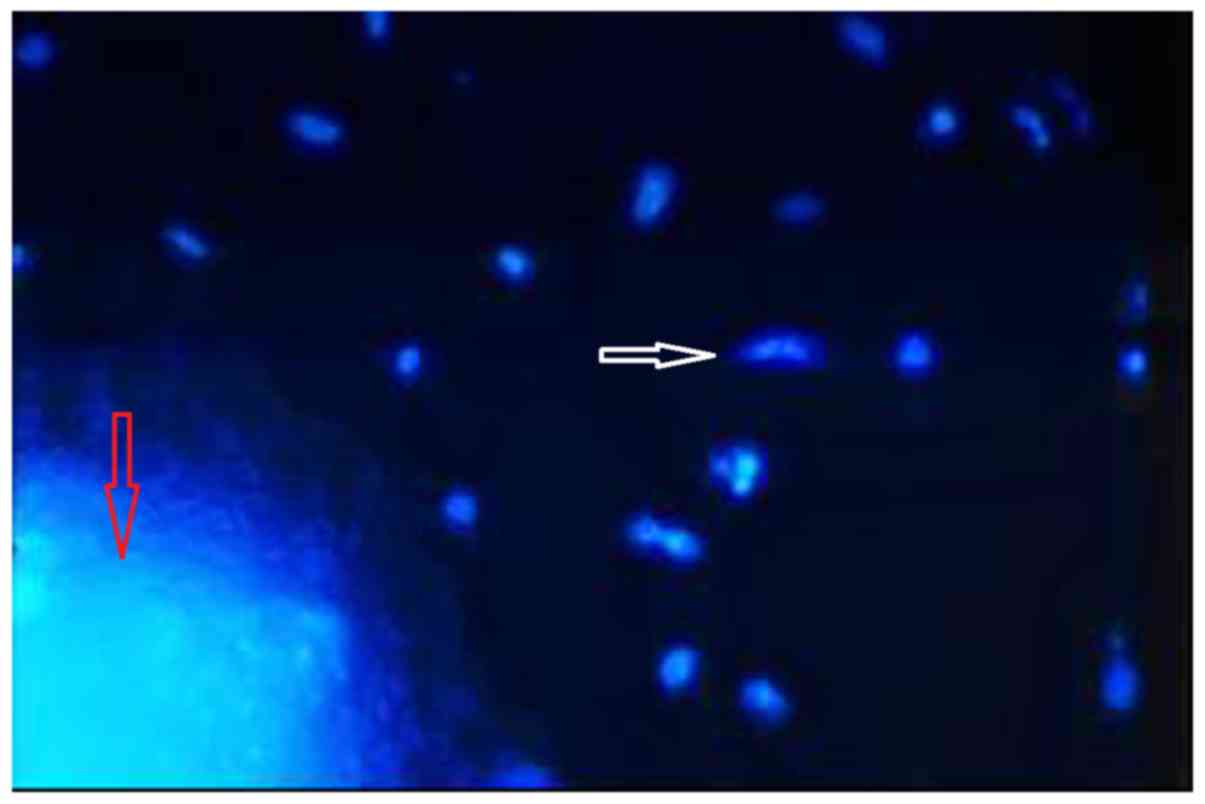|
1
|
Heydari Z, Najimi M, Mirzaei H, Shpichka
A, Ruoss M, Farzaneh Z, Montazeri L, Piryaei A, Timashev P,
Gramignoli R, et al: Tissue engineering in liver regenerative
medicine: Insights into novel translational technologies. Cells.
9(304)2020.PubMed/NCBI View Article : Google Scholar
|
|
2
|
Vcelar S, Melcher M, Auer N, Hrdina A,
Puklowski A, Leisch F, Jadhav V, Wenger T, Baumann M and Borth N:
Changes in chromosome counts and patterns in CHO cell lines upon
generation of recombinant cell lines and subcloning. Biotechnol J.
13(e1700495)2018.PubMed/NCBI View Article : Google Scholar
|
|
3
|
Donfack NJ, Alves KA, Araújo VR, Cordova
A, Figueiredo JR, Smitz J and Rodrigues APR: Expectations and
limitations of ovarian tissue transplantation. Zygote. 25:391–403.
2017.PubMed/NCBI View Article : Google Scholar
|
|
4
|
Dou M, Lu C, Sun Z and Rao W: Natural
cryoprotectants combinations of l-proline and trehalose for red
blood cells cryopreservation. Cryobiology. 91:23–29.
2019.PubMed/NCBI View Article : Google Scholar
|
|
5
|
Specchia C, Baggiani A, Immediata V,
Ronchetti C, Cesana A, Smeraldi A, Scaravelli G and Levi-Setti PE:
Oocyte cryopreservation in oncological patients: Eighteen years
experience of a tertiary care referral center. Front Endocrinol
(Lausanne). 10(600)2019.PubMed/NCBI View Article : Google Scholar
|
|
6
|
Zhu Z, Qiao L, Liu F, He J, Rao X, Zhang S
and Tang P: Dimethyl sulfoxide is less effective in immersing
cryopreserved large pieces of tissue: A rabbit hind-limb model. Med
Sci Monit. 25:7908–7913. 2019.PubMed/NCBI View Article : Google Scholar
|
|
7
|
Ruan X, Cui Y, Du J, Jin J, Gu M, Chen S
and Mueck AO: Randomized study to prove the quality of human
ovarian tissue cryopreservation by xenotransplantation into mice. J
Ovarian Res. 12(46)2019.PubMed/NCBI View Article : Google Scholar
|
|
8
|
Osei-Bempong C, Ghareeb AE, Lako M,
Figueiredo FC and Armitage WJ: Defining the optimal cryoprotectant
and concentration for cryopreservation of limbal stem cells.
Cryobiology. 84:98–102. 2018.PubMed/NCBI View Article : Google Scholar
|
|
9
|
Hughes SM, Ferre AL, Yandura SE, Shetler
C, Baker CAR, Calienes F, Levy CN, Astronomo RD, Shu Z, Lentz GM,
et al: Cryopreservation of human mucosal tissues. PLoS One.
13(e0200653)2018.PubMed/NCBI View Article : Google Scholar
|
|
10
|
Paynter JM, Chen J, Liu X and Nefzger CM:
Propagation and Maintenance of Mouse Embryonic Stem Cells. Methods
Mol Biol. 1940:33–45. 2019.PubMed/NCBI View Article : Google Scholar
|
|
11
|
Cohen J, DeVane GW, Elsner CW, Fehilly CB,
Kort HI, Massey JB and Turner TG Jr: Cryopreservation of zygotes
and early cleaved human embryos. Fertil Steril. 49:283–289.
1988.PubMed/NCBI View Article : Google Scholar
|
|
12
|
Benvenutti L, Salvador RA, Til D, Senn AP,
Tames DR, Amaral NLL and Amaral VLL: Wistar rats immature
testicular tissue vitrification and heterotopic grafting. JBRA
Assist Reprod. 22:167–173. 2018.PubMed/NCBI View Article : Google Scholar
|
|
13
|
Kojayan G, Whaley D, Alexander M,
Rodriguez S, Lee S and Lakey JR: Improved cryopreservation yield of
pancreatic islets using combination of lower dose permeable
cryoprotective agents. Cryobiology. 88:23–28. 2019.PubMed/NCBI View Article : Google Scholar
|
|
14
|
Nakayama K, Yamanaka T, Tamada Y,
Hirabayashi M and Hochi S: Supplementary cryoprotective effect of
carboxylated ε-poly-l-lysine during vitrification of rat pancreatic
islets. Cryobiology. 88:70–74. 2019.PubMed/NCBI View Article : Google Scholar
|
|
15
|
Powell-Palm MJ, Zhang Y, Aruda J and
Rubinsky B: Isochoric conditions enable high subfreezing
temperature pancreatic islet preservation without osmotic
cryoprotective agents. Cryobiology. 86:130–133. 2019.PubMed/NCBI View Article : Google Scholar
|
|
16
|
Kojayan GG, Alexander M, Imagawa DK and
Lakey JRT: Systematic review of islet cryopreservation. Islets.
10:40–49. 2018.PubMed/NCBI View Article : Google Scholar
|
|
17
|
Martignoni M, Monshouwer M, de Kanter R,
Pezzetta D, Moscone A and Grossi P: Phase I and phase II metabolic
activities are retained in liver slices from mouse, rat, dog,
monkey and human after cryopreservation. Toxicol In Vitro.
18:121–128. 2004.PubMed/NCBI View Article : Google Scholar
|
|
18
|
Berggren RB and Lether HB: Clinical use of
viable frozen human skin. JAMA. 194:149–151. 1965.PubMed/NCBI
|
|
19
|
Bondoc CC and Burke JF: Clinical
Experiment with viable frozen human skin and a frozen skin bank.
Ann Surg. 174:371–382. 1971.PubMed/NCBI View Article : Google Scholar
|
|
20
|
Taylor MJ, London NJM, Thirdborough SM,
Lake SP and James RFL: The cryobiology of rat and human dendritic
cells: Preservation and destruction of membrane integrity by
freezing. Cryobiology. 27:269–278. 1990.PubMed/NCBI View Article : Google Scholar
|
|
21
|
Casula E, Asuni GP, Sogos V, Fadda S,
Delogu F and Cincotti A: Osmotic behaviour of human mesenchymal
stem cells: Implications for cryopreservation. PLoS One.
12(e0184180)2017.PubMed/NCBI View Article : Google Scholar
|
|
22
|
Wise MH, Yates A, Gordon C and Johnson
RWG: Subzero preservation of mechanically prepared porcine islets
of Langerhans: Respone to a glucose challenge in vitro.
Cryobiology. 20:211–218. 1983.PubMed/NCBI View Article : Google Scholar
|
|
23
|
Hullett DA, Bethke KP, Landry AS, Leonard
DK and Sollinger HW: Successful long-term cryopreservation and
transplantation of human fetal pancreas. Diabetes. 38:448–453.
1989.PubMed/NCBI View Article : Google Scholar
|
















